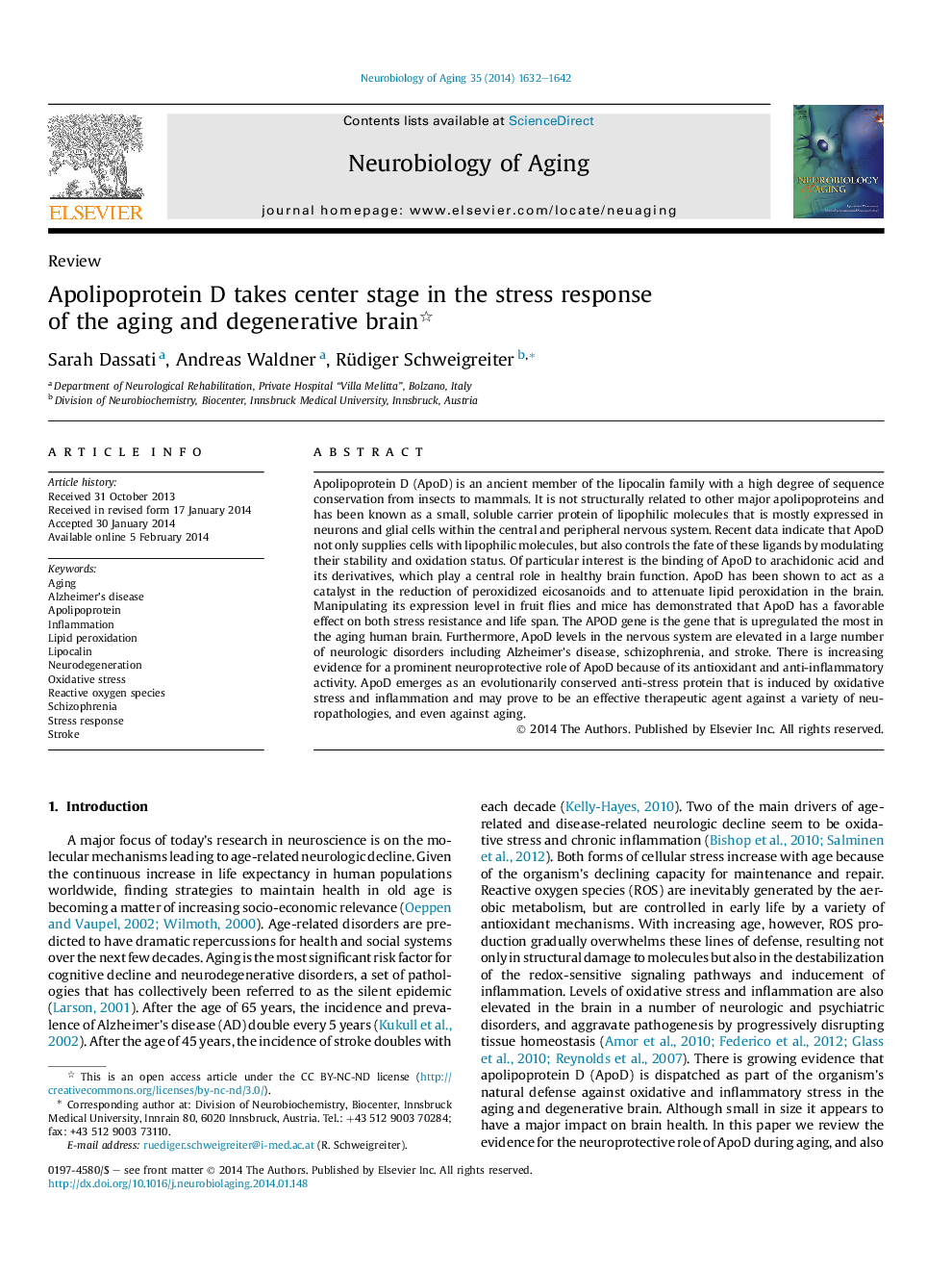| کد مقاله | کد نشریه | سال انتشار | مقاله انگلیسی | نسخه تمام متن |
|---|---|---|---|---|
| 6805853 | 1433567 | 2014 | 11 صفحه PDF | دانلود رایگان |
عنوان انگلیسی مقاله ISI
Apolipoprotein D takes center stage in the stress response of the aging and degenerative brain
دانلود مقاله + سفارش ترجمه
دانلود مقاله ISI انگلیسی
رایگان برای ایرانیان
کلمات کلیدی
apolipoprotein - آپولیپوپروتئینSchizophrenia - اسکیزوفرنی یا شیزوفرنیinflammation - التهاب( توروم) Alzheimer's disease - بیماری آلزایمرOxidative stress - تنش اکسیداتیوNeurodegeneration - تولید نوروژنیکAging - سالخوردگیStroke - سکته مغزیLipocalin - لیپوکالینStress response - پاسخ به استرسLipid peroxidation - پراکسیداسیون لیپیدReactive oxygen species - گونههای فعال اکسیژن
موضوعات مرتبط
علوم زیستی و بیوفناوری
بیوشیمی، ژنتیک و زیست شناسی مولکولی
سالمندی
پیش نمایش صفحه اول مقاله

چکیده انگلیسی
Apolipoprotein D (ApoD) is an ancient member of the lipocalin family with a high degree of sequence conservation from insects to mammals. It is not structurally related to other major apolipoproteins and has been known as a small, soluble carrier protein of lipophilic molecules that is mostly expressed in neurons and glial cells within the central and peripheral nervous system. Recent data indicate that ApoD not only supplies cells with lipophilic molecules, but also controls the fate of these ligands by modulating their stability and oxidation status. Of particular interest is the binding of ApoD to arachidonic acid and its derivatives, which play a central role in healthy brain function. ApoD has been shown to act as a catalyst in the reduction of peroxidized eicosanoids and to attenuate lipid peroxidation in the brain. Manipulating its expression level in fruit flies and mice has demonstrated that ApoD has a favorable effect on both stress resistance and life span. The APOD gene is the gene that is upregulated the most in the aging human brain. Furthermore, ApoD levels in the nervous system are elevated in a large number of neurologic disorders including Alzheimer's disease, schizophrenia, and stroke. There is increasing evidence for a prominent neuroprotective role of ApoD because of its antioxidant and anti-inflammatory activity. ApoD emerges as an evolutionarily conserved anti-stress protein that is induced by oxidative stress and inflammation and may prove to be an effective therapeutic agent against a variety of neuropathologies, and even against aging.
ناشر
Database: Elsevier - ScienceDirect (ساینس دایرکت)
Journal: Neurobiology of Aging - Volume 35, Issue 7, July 2014, Pages 1632-1642
Journal: Neurobiology of Aging - Volume 35, Issue 7, July 2014, Pages 1632-1642
نویسندگان
Sarah Dassati, Andreas Waldner, Rüdiger Schweigreiter,